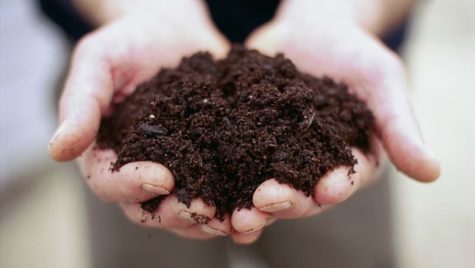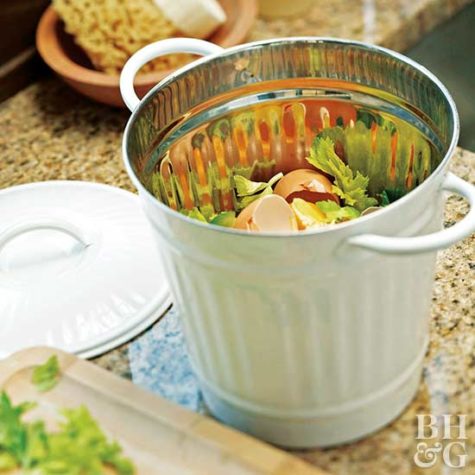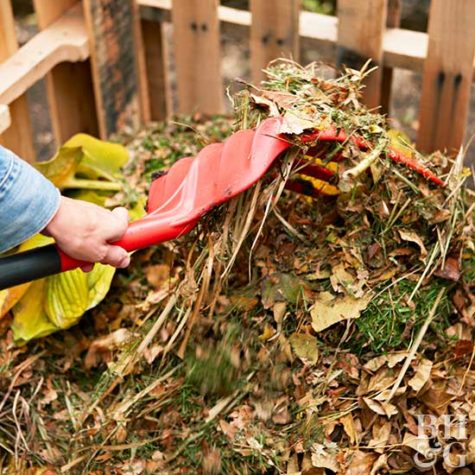
By: Morgan Creek | Opinion Editor
April 10, 2018
For the first time in several weeks, San Clemente reached a high of 83 degrees on Monday, April 9th. With the weather warming up and summer just around the corner, now is the perfect time to begin the art of decomposing trash-composting.
So what exactly is composting? And how can our compost (trash) play any role in gardening? Well, composting recycles various organic materials – otherwise regarded as waste products – and produces a soil “conditioner” in a sense. Because compost is organic matter that’s decomposed, it’s nutrient-rich and acts as a great natural fertilizer for garden plants.
Compost is created by taking specific types of trash (vegetable peels, fruit, grass clippings, coffee grounds, etc.) and allowing them to decompose naturally. Known as the “black gold” for gardens, the compost is added to garden soil to enrich it. This is how trash can help grow your garden. As more plants grow in your garden, the cycle is then repeated.
By composting, you’ll be reducing your trash waste and carbon footprint. You’ll also likely reduce the need to buy inorganic fertilizers that can be harmful to surrounding ecosystems, allowing you to help the environment while saving money. Lastly, it’s a fun and relatively easy way to help grow a beautiful garden and delicious fruits and vegetables (which you’ll be saving money on as well!)
There are several misconceptions towards composting, such that it’s complicated or smells bad. This can be true if you compost incorrectly, but can be avoided with some helpful tips and pointers. So, here ten easy steps that will help you begin composting in your own backyard:
1. Get a compost bin
There are various types of compost bins available to purchase, and most are relatively inexpensive. Purchase a bin that will fit nicely in your yard, or look into building your own.
2. Find a place to compost
You’ll want to choose somewhere that isn’t too close to your house in case it starts to smell. Placing your bin in the sun will allow the organic material to break down faster, but it will also need to be watered more frequently.
3. Layer the bottom with “brown” material
Brown material is made up of plant debris and should be dry. This includes dry leaves, dead plants and weeds, sawdust, straw, old flowers (including dried floral displays), and hay.

4. Make another layer of “green” material
Green materials are nitrogen-rich substances, like weeds, grass cuttings, fruit and vegetables scraps, tea leaves, etc.
5. Add other items
Occasionally, paper towels, paper bags, cotton clothing (torn up), egg shells, and coffee grounds can be added to your compost bin. But, these things should be used in moderation.
6. Keep adding more layers
As you acquire more green material, alternate layering it with brown material. The ideal compost pile is between 3 parts brown materials to 1 part green to half and half, depending on what materials you have on hand. If your compost pile looks too wet and smells, add more brown items. If you see it looks extremely brown and dry, add green items and water to make it slightly moist.
7. Cover your bin
Covering your compost with a layer of general yard waste or a lid will help cover any bad smells and also help keep animals out of your compost pile.
8. Water your pile
Sprinkle water over the pile regularly so it has the consistency of a damp sponge that has been wrung out. If you accidentally over water, add dry, brown material.

9. Stir up your pile
You should turn your pile once a week with a shovel or pitch fork. Move matter from inside to outside and from top to bottom, and break up anything that is clumpy or matted. If you are still adding to the pile, take the opportunity while you turn it to introduce the new matter and mix it well with the older matter.
10. Feed your garden!
At some point, you may need to stop adding to the compost pile to let it “finish up.” You will know your compost is ready for use when it is no longer warm and it is a deep brown color throughout. It usually takes about 2 to 3 months for compost to be made, depending on the weather conditions and the contents of your pile. Add about 4 to 6 inches of compost to your garden once its finished decomposing.
Now you know the general steps to help the environment and grow a beautiful garden while you’re at it! For more detailed instructions, visit https://www.bhg.com/gardening/yard/compost/how-to-compost/.
Happy composting!
(Images taken from BHG).

Leave a Reply